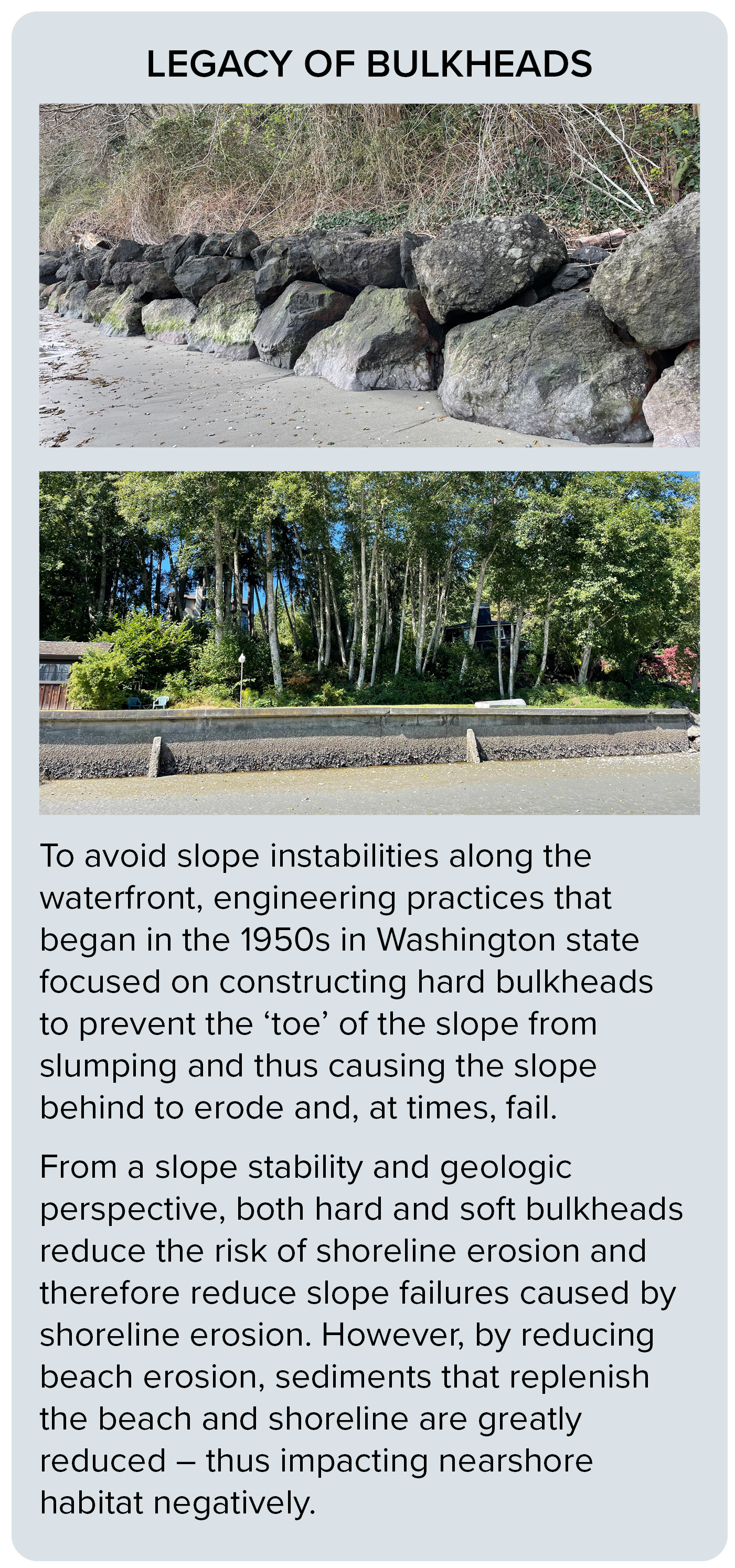Puget Sound has 2,500 miles of some of the most breathtaking shoreline and nearshore habitat in the world. From a geologic perspective, these shorelines are a dynamic environment – with the waves naturally eroding the base of the slopes above while carrying important, nutrient-rich sediment to build back up the beaches. For waterfront residents, the dynamic shoreline is often the reason they choose to live there.
Recent regulatory focus by the Washington State Department of Fish and Wildlife (WDFW) increasingly emphasizes nearshore habitat goals, which means waterfront homeowners frequently grapple with what can feel like competing interests:
Preserving and protecting the land between shorelines and homes
Allowing natural shoreline erosion and processes to occur to feed marine habitat
Example of a soft shoreline system along the Cornet Bay shoreline in Island County. Source: Washington State Department of Ecology
Photo Credit: Hugh Shipman
What’s New in Waterfront and Nearshore Habitat Permitting?
In July 2021, WDFW approved a revised code requiring an Alternatives Analysis for replacing waterfront structures. This analysis follows a prescribed flow chart that considers options ranging from complete bulkhead removal to installation of a soft shoreline to in-kind hard structure replacement
Graphic source: Aspect Consulting
Bulkhead removal and soft shoreline systems are increasingly favored by state and local jurisdictions, to emphasize nearshore habitat development. The soft shoreline systems emphasize strategically adding large woody debris (i.e., anchored beach logs); placement of beach sand; and planting native vegetation to keep slopes stable and help the shoreline environment. As WDFW and other agencies (both local and county) begin enforcing and implementing this new code, waterfront homeowners need to be aware of how to both protect their waterfront while also promoting shoreline health.
What Should Shoreline Homeowners Be Aware Of?
As waterfront residents consider how to maintain their property, it’s important to consider shoreline erosion as a benefit for ecological function so that the beauty and dynamic nature of the shoreline remains for future generations. If you own property along the shoreline, there are a few things that you can do to preserve this important habitat:
If you have a bulkhead, get to know it by inspecting it at low tide, take photos and measurements on a regular basis. Look for things like damage to the structure, undermining of the foundation, and signs of over-topping during high tides and/or wind storms. Don’t delay maintenance and document changes over time.
Know and understand your stormwater system, including the final outfall. This includes catch basins, yard drains, roof-gutter downspouts, foundation drains, curtain drains, etc. If these systems are not maintained or are poorly designed to begin with, they can increase the rates of erosion behind or on the shoreline.
Plant and maintain native vegetation to help control surface water and rain water, and resulting erosion.
Measure distances from the closest point of all structures (sheds, residences, utilities) to where the vegetation along the shoreline ends to:
Document changes over time
Comply with bulkhead maintenance requirements for your jurisdiction
To learn more, contact Engineering Geologist Ali Dennison.




